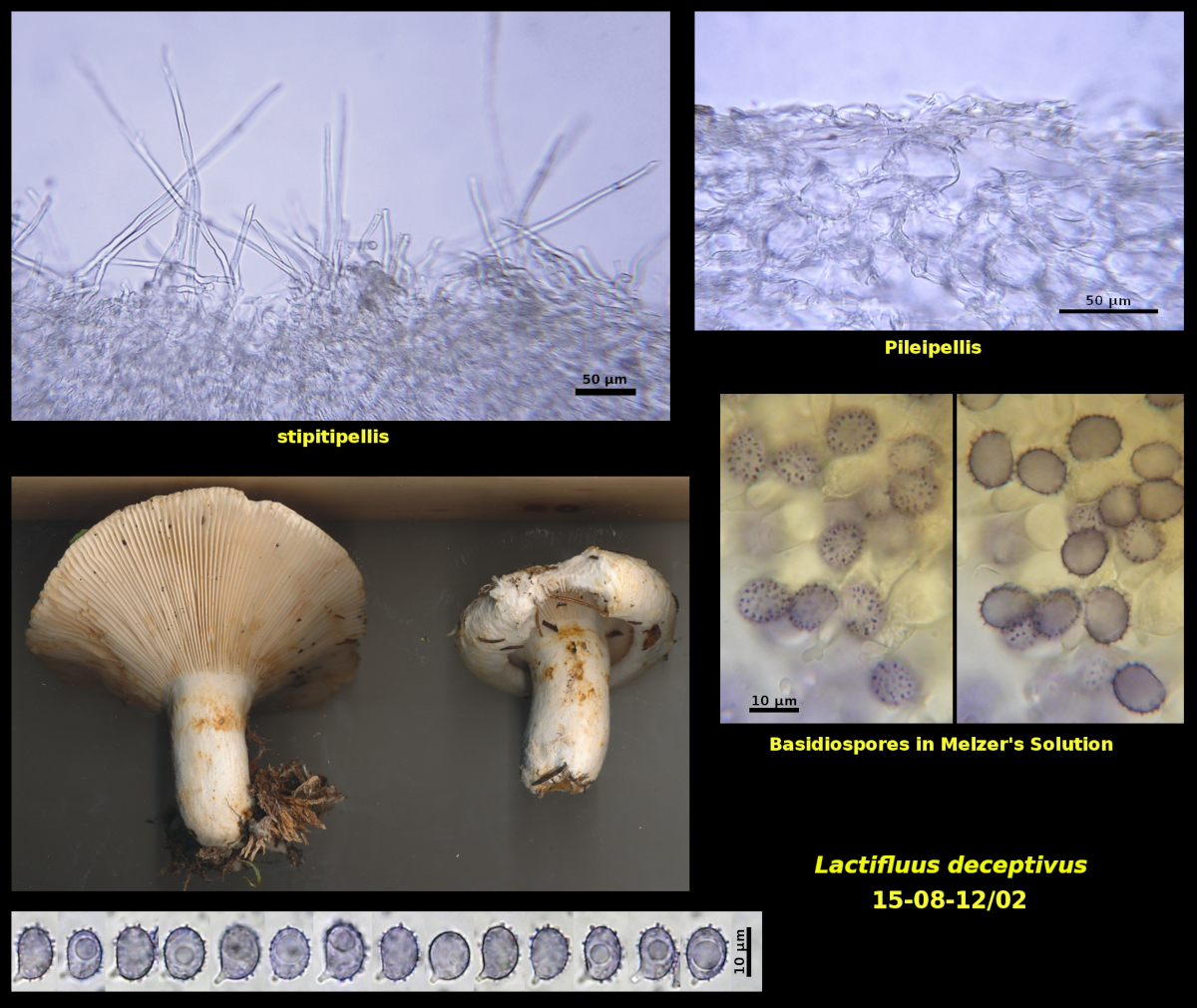Fleshy Fungi of New Brunswick >>
Lactifluus deceptivus
Lactifluus deceptivus (Peck) Kuntze

Gregarious in soil under Picea rubens, Abies balsamea and Betula papyrifera, Caledonia Gorge Protected Natural Area, New Brunswick (15-08-12/02).
Basidiospores 9.7-10.9 X 6.9-8.2 μm, Q=1.18-1.51.
Species of the genus Lactifluus, in the sense of recent authors, are similar to those of Lactarius and share with them the production of milk or latex when the tissues are damaged. Arguments for keeping the two genera apart are based mainly on evidence from molecular genetics. However there are some morphological structures that are useful for distinguishing them. Species of the genus Lactifluus are mostly tropical, often have thick-walled elements in the pileipellis and stipitipellis, and often have sphaerocysts in the lamellar trama (like species of Russula). In the plate shown here, the thick-walled spiny hairs on the surface of the stipe are good indicators that this is a species of lactifluus.
Delgat et al., 2016 have shown that the mushrooms we call L. deceptivus form a "clade" representing at least 15 species that are highly difficult to differentiate without using molecular genetic methods. Hence, Collection 15-08-12/02, shown here, may not be the "true" L. deceptivus but, in fact, one of the other 14 species.
Collectors looking for a more detailed discussion of Lactifluus can refer to De Crop et al., 2019 or Verbeken and Nuytinck, 2013.
Photo: D. Malloch (15-08-12/02).